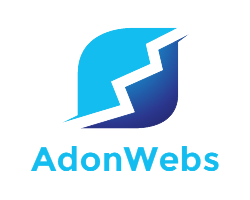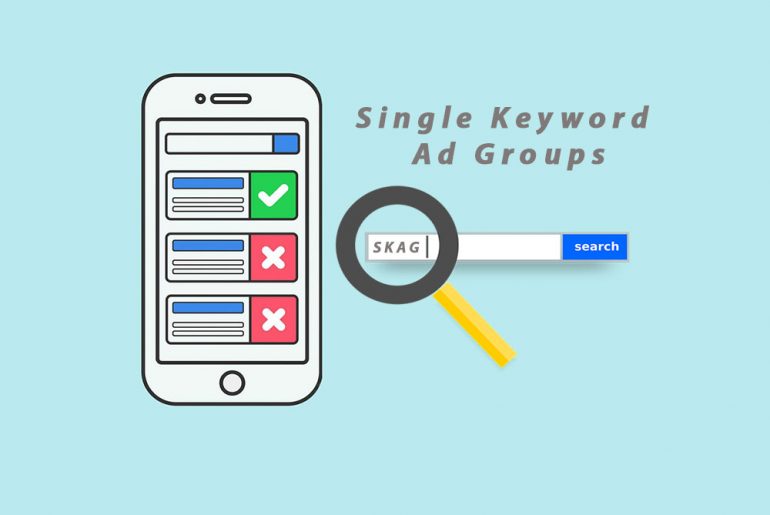Updated April 23rd, 2025
Table of Contents
What is Single Keyword Ad Groups?
Google Ads having ad groups with only one keyword are known as ‘Single Keyword Ad Groups’ (SKAGs)
PPC marketers can have more control and an organized account structure. Using Google Ads allows improving quality score, boost click-through rate, and reduces total ad spend without affecting the final outcome.
With single keyword ad groups, you can experience a gradual increase in CTRs and improvement in the quality score. Only smart and visionary marketers use the tactic to maximize their PPC spend. Let’s have a look in detail for a better understanding!
Quality Score
The cost per conversion experience a significant impact based on one of the most important Google Ads account metrics known as Quality Score. On analyzing more than 30,000 accounts, it was concluded that even a singular point increase in Quality Score can decrease the cost per conversion by approximately 16%. This Quality Score is a combination of three different factors;
- Ad relevancy
- Expected CTR and,
- Landing Page experience

That said, detailed research has been conducted on Quality Score algorithm factors revealing that both the click-through rate (CTR) and Quality Score are directly associated. Likewise, boosting ad relevancy and CTR also brings down the cost per click (CPC) thus indicating an improvement in the Quality Score.
Must-Reads :
12 Best Video Editing Software for YouTuber in 2025-26
Top 10 Most Trending Keywords in 2025-26: What They Mean For an SEO Expert
Dynamic Search Ads – The Ultimate Guide on DSA Campaigns
Google Adwords Tutorial – Create Your First Profitable Campaign
Single Keyword Ad Groups (SKAGs)
Just as the name complies, ad groups with only one keyword in the target ad groups are referred to as Single Keyword Ad Groups (SKAGs). Perhaps you’re having several in a group whereas even Google suggests including at-least 10-to-20 keywords within an ad group.
Doing so however is quite a challenge because writing ads that are 100% relevant against the keywords is beyond human however not impossible. This is one reason you don’t actually achieve higher Quality Score as anticipated
Improvement in the Quality Score
A test experiment was conducted to analyze the performance of implementing single keyword ad groups. It was concluded that CTR boosted by approximately 29% based on the two-month trial. Quality Score also improved from 5 to approximately 8 (out of a 10 scale).
Ensuring Data Reliability
The testing strategy for PPC is different. The primary drawback is ensuring the reliability of the search results that are all dynamic rather than static. Take for instance something that you recently searched for and then refresh the page, the result ads would be different here.
Most of the advertisers have their own ads popping up against nearly 50-to-80% searches, depending on the incurred budget. This is because ad writers can come up with several different variations of the ad copies thus having somewhere around 40 different ads in a pool.
Your ad would then be selected by Google against particular search queries. Still, you’ll surely experience some hitches in between and have to find a balance to make things keep running smoothly. Average Position which has a huge impact on CTR and the total number of extensions are two things you should consider most in particular.
Implementing Single Keyword Ad Groups
Before creating single keyword ad groups, do note that now every keyword needs to be included in the group. Creating the group is a time-consuming process since it’ll have two distinct yet keyword-relevant copies that are tailored accordingly. Danya Ayaz Digital Marketer at Digital Gravity suggests applying the rule of 80/20 according to which 80% output is given to the campaign’s outcome whereas 20% is reserved for the input.
With Google Ads, a common finding indicates that nearly 80% of conversions are driven by keywords in the top 20%. This is the reason you might as well focus on these particular keywords and add them to the single keyword ad groups of their own.
The Process
Step 1: Execute a Search Terms Report

Access your Google Ads account, navigate to the search terms report on clicking the keywords tab.
Step 2: Rank/Prioritise

Do note that your search terms report is organized as per the number of conversions that are done on clicking the header of the conversion column. Once done, you might as well include all the top-performing keywords against their own ad groups.
Step 3: Include the Match Types

The best practice is adding the keyword in all the three-match types that includes exact match, broad match modifier, and phrase match, to the ad group.
Create Precise Ads

The last step is creating keyword specific ads that are more relevant and appealing. The copywriter would include the exact keyword in the headline area alongside the display URL. The rest of the ad would circle around USP and focus on the call to action, thereby prompting users to perform an action.
Copyright Caution
Just in case the targeted keywords include competitor’s brand name, you need to be extra careful while ensuring yours don’t include the brand name in the ad copy. If this happens, you’ll be held liable for copyright breach or illegal infringement.
Improving Performance
Much like any other PPC strategy, creating a single keyword ad group based on high performance requires testing ad copy variations. The only way to gauge the results on call to actions and USPs that resonates most to the target audience is possible by running a test campaign and see which actually boosted the CTR as well as relevancy to the ad itself.
According to a survey conducted by Digital Express, data analysis of more than 30,000 people revealed that only one in a hundred has the potential of six-times greater CTR than average. The results also concluded that only one-in-20 ads have three times greater CTR than average. Thus, to achieve three times the average CTR, you’ll be testing nearly 20 different ad copy variations before finding the most appropriate.
Most people simply exclude the strategic testing process only to end up testing random and insignificant changes to the ads. The outcome is zero or very little improvement after which people usually give up.
Wrap-Up
To increase relevancy and CTR of the ads, Single Keyword Ad Groups (SKAGs) are incredibly effective. The two factors are most important in boosting the Quality Score algorithm and takes up approximately 60% of the cut. Eventually, improvement in the Quality Score decreases the CPC. Here’re a few steps you should follow to set up Single Keyword Ad Groups:
- Filter the top-performing keywords
- Add them in all three match types against the SKAGs
- Create targeted and specific ads for each ad group
- Begin testing on a broader scale, modify the copies from scratch if you need to, based on the offers and USPs so on
Follow by testing smaller and more insignificant factors however, don’t ignore these at all. Examples can be punctuation, grammar, capitalization and more.







![How to Fix Invalid Value GTIN [gtin] – Google Merchant Center How to Fix Invalid Value GTIN](https://adonwebs.com/aw/wp-content/uploads/2022/08/How-to-Fix-Invalid-Value-GTIN--270x180.jpg)





2 Comments
Highly appreciate your blog which portrays the benefits and processes of Single Keyword Ad Groups.Plz do share such blogs. Thanks!
SEO Company in Lucknow
Thanks for sharing The Awesome content. I will also share with my friends. Great Content thanks a lot .